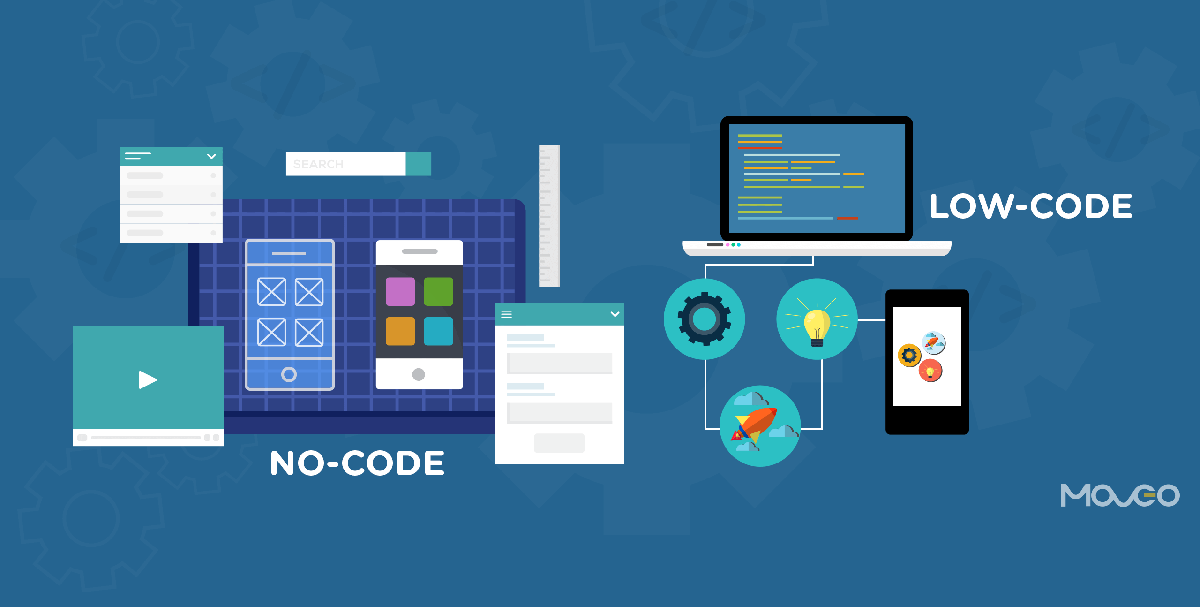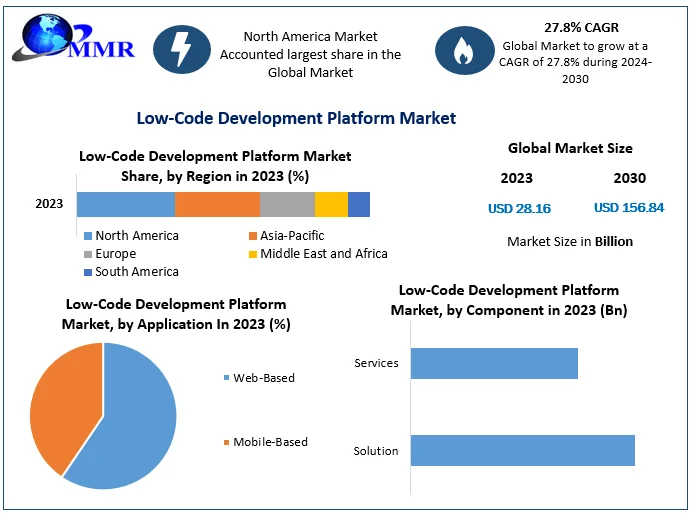Best Reasons On Picking Low-Code Platform Recommendations
Wiki Article
Benefits Of Low-Code Application Development In Terms Of Accessibility To Non-Developers
Due to a number of factors the development of low-code applications is more accessible to non-developers. These are sometimes referred to as "citizens developers."
Drag-and -Drop Builders. Low-code platforms include drag-and -drop interfaces. This provides non-programmers with the ability to create applications using visuals, without having to write code. This makes development easier for those with no technical backgrounds.
WYSIWYG: WYSIWYG editors are "What you see is what you get" editors that allow users to design workflows and interfaces that are similar to the finished product. This makes it easier to comprehend and use.
Simple Workflow and Logic Design:
Visual Workflow Design: Users can easily create business processes and application logic by using diagrams, models, and flowcharts. They are simpler to implement than traditional programming.
Logical Components Pre-built: Many low-code programs come with built-in components for logic (e.g. loops, conditions) which can be easily configured. This reduces the necessity to write complicated programs.
Reusable Components and Templates
Library of Pre-built Templates: Numerous low-code platforms have a library of templates for common application types, enabling non-developers to start with a solid foundation and modify as they need to.
Reusable Modules and Widgets: Users can leverage reused widgets and modules, streamlining the creation process and reducing the need for technical knowledge.
Tutorials and Guided Development
Step-by-Step Guides: Platforms often offer a set of development guides along with tutorials and suggestions to help non-developers with building applications.
Interactive Tutorials. Interactive, hands on tutorials let users learn through doing.
Integration with Tools Already in Use
Seamless Integration: Low-code platforms are designed to integrate seamlessly with the existing business tools, systems, and software (e.g., ERP and CRM). This enables non-developers who do not have a background in programming to build applications that are compatible with their existing workflows.
APIs/Connectors: These APIs/Connectors enable non-developers to connect their applications to other services.
Collaboration Features:
Team Collaboration - Features like real-time team collaboration and shared workspaces enable non-developers to collaborate with analysts, professionals, developers, and the other stakeholders.
Access Control Based on Roles: Non-developers can be assigned roles and access levels that allow their participation without compromising functionality or security.
Automated Testing and Debugging
Low-code platforms come with tools to test and debug which are built into. They automatize the procedure, making it much easier for nondevelopers to ensure their apps function.
Platform highlights errors when they occur and offers fixes. This aids non-developers with troubleshooting.
Development using low-code is more accessible to non-developers as it makes development more accessible to everyone. By offering intuitive, visually-guided tools and experiences, low code platforms enable business owners to actively contribute and manage applications. View the top Low-code Platform for application development advice for blog tips including application modernisation, ms azure sql, app modernization, build with docker, driver jdbc, cross platform app development, developing mobile apps, azure sql databases, developing mobile apps, develop web app and more.

Benefits Of Low-Code Application Development For Governance And Security
Low-code development of apps offers numerous advantages in terms of governance and security. This is vital to ensure that applications conform to regulations, are secure and well-managed throughout their lifespan. Here are the benefits of low-code application development:
Unified Management Console: Low-code platform usually provides a central dashboard for administrators to monitor and manage all apps, ensuring consistency governance across the organisation.
Role-Based Access Control (RBAC) These platforms usually include strong access control based on role which allows administrators to set and enforce access rules. This makes sure that only users who are authorized have the ability to access or modify particular parts of an application.
Compliance and Regulatory Adherence
Built-in Compliance Features: Many low-code platforms are built to be compliant with industry standards as well as regulations (e.g., GDPR, HIPAA). They offer templates and tools to ensure that the applications are compliant with these requirements.
Audit Trails and Logging Comprehensive logs and audit trails can be integrated to enable organizations to track change as well as monitor access to ensure conformity.
Improved Security Measures:
Data Encryption Low-code platforms often include built-in encryption of information in transit and in rest, securing sensitive data.
Security Certifications: Many low-code providers have security certifications (e.g., ISO 27001, SOC 2) that prove their compliance with high security standards, providing extra security for users.
Automated Security Updates:
Regular Updates and Patches: Low code platforms are typically equipped to handle patches and security updates on a regular basis. This ensures that applications remain protected from the latest threats without the need for developers to manually handle.
Security Monitoring - Continuous security monitoring is often comprised. It provides real-time insight and alerts on possible security threats.
Data Governance
Data Access Policies: These tools allow organisations to define as well as enforce and monitor data policies. This will ensure that the data is only accessible to authorized users and used correctly.
Data Masking and Anonymousization: The built-in tools to hide and anonymize data helps safeguard sensitive data in development and testing environments.
Consistent Application Lifecycle Management
Pipelines for development and deployment: Low-code platforms allow for integrated development, as well as security checks. This guarantees security throughout the lifecycle of an application.
Version Control: Integrated version control allows for the management of modifications and makes sure that changes to the application are tracked and reverted if necessary to ensure the integrity of the application.
User Authentication Authorization
Single Sign-On (SSO) Single sign-on support and other advanced authentication mechanisms simplify management of users and improves security.
Multi-Factor Authentication – Many platforms come with built-in functions for multi-factor authentication that adds an extra layer of security.
Monitoring Policy Enforcement
Low-code platforms often come with pre-defined policies templates that allow organizations to establish governance and cybersecurity policies quickly.
Tools for Monitoring Compliance: These tools are able to monitor and report continuously on the status of compliance. They allow you to spot issues and tackle the issues in a proactive way.
Integration into Existing Security Infrastructure:
seamless intergration: Low code platforms are designed to allow seamless integration with existing security tools and equipment, such as Identity Management Systems SIEM Solutions (Security Information and Event Management), and Firewalls.
API Security: Built-in API security features ensure that integrations with external systems are safe, safeguarding information and ensuring the integrity of the application.
Training and the best practices
Guided Best Practices: Many platforms provide guidelines and best practices for secure application development, helping non-developers adhere to security standards.
Security Training: Some companies of low-code software offer courses and other resources for security to help users learn how to create and maintain secure applications.
Overall, low-code application developers have a security and governance benefit that enables them to develop and manage their apps in a controlled, regulated and secure way. These platforms offer the frameworks and tools necessary to secure sensitive data and enforce policies, as well as maintain regulatory compliance, while facilitating management and oversight. View the recommended https://www.wavemaker.com/low-code-enterprise-application-development-platform/ for site advice including multiplatform mobile app development, application modernization, develop mobile application, app development platform, app modernisation, rad application development, low code development platforms, develop mobile application, push notifications, rad application development and more.

Low-Code Software Can Be Beneficial In Terms Of Collaboration And Workflow
Low-code applications offer a number of benefits in workflow and collaboration, making it the perfect choice for businesses looking to enhance team productivity and speed up development processes. Here are some of the most important benefits: Improved cross-functional collaboration:
Unified Development Environment Low-code platform provides an all-in-one environment where all team members, including developers, analysts, designers, stakeholders and more, can efficiently work together. This reduces the number of silos and enhances communication.
Visual Development Tool: The drag-and-drop nature of platforms that utilize low-code makes it easier for team members who aren't technologically inclined to participate in the process of developing. They are able to make sure that the business's requirements will be accurately captured and implemented.
Communication Improved:
Real-Time Collaborative Features: A lot of platforms using low-code have real-time collaborative capabilities, which include simultaneous editing, comments and instant feedback. These features help in collaboration and cut down in back and forth conversations.
Workspaces shared by teams can to work in tandem in shared workspaces where they can edit and discuss project elements. This helps ensure that everyone is striving for the same objectives and are on the same level.
Streamlined Workflow
Built-in Tools for Project Management: Platforms that are low-code usually come with integrated tools for managing projects that aid teams in planning, track, and manage their development initiatives. This includes assigning tasks, monitoring progress, and managing deadlines.
Workflow Automated: The automation of repetitive work, workflows, as well as other processes minimizes the manual effort needed and eliminates mistakes. This lets teams concentrate on tasks that are more profitable and increases efficiency.
Faster iteration cycles:
Rapid Prototyping : Low-code platforms facilitate rapid prototyping. They also allow rapid and iterative development. This allows teams to create apps, test them and refine them in shorter periods of time. This lets feedback be swiftly integrated, and further improvements to be made.
Agile Development Support: Support of agile practices lets team members be involved in sprints. They can continuously deliver small increments in functionality, and easily adapt to the changing needs.
Accessibility to Non-Developers
Citizen Development: Low-code platforms enable business users (citizens developers) to develop and modify applications, without having a deep understanding of programming. This frees IT and Development teams of burdens and allows quicker responses to business requirements.
Training and Onboarding Simple interfaces and extensive training materials make it simpler for new members to learn the ropes, enhancing the overall collaboration within the team.
Centralized documentation Knowledge sharing, dissemination and centralization:
Integrated Documentation: Low-code systems usually include features for creating and maintaining documents within the platform, ensuring that all project information is centralized and easily accessible.
Knowledge Repositories. Teams are able to create and manage knowledge repositories, which include best practices templates and reuseable components, making it easier for knowledge exchange and reducing the amount of duplicate work.
Consistency in Standardization
Standardized components: A standardized components, built in advance, ensures the consistency of applications. Team members can comprehend and work better on various parts.
Governance and compliance Governance and compliance frameworks that are built-in to ensure that applications are created in line to organizational standards, regulatory requirements, and quality standards. They reduce the risk of not being compliant and ensure that the applications are compliant with specifications.
Feedback and Improvement:
Integrated Feedback Mechanisms - Low-code platforms are often equipped with built-in feedback mechanisms. These enable users to quickly provide feedback about applications that can later be used in the process of development.
Continuous Improvement: The capability for applications to iterate quickly and make changes on the basis of feedback, while ensuring they are in line with the requirements of the user as well as business goals.
Visualization, Reporting and Analysis:
Real-time Analytics: In-built analytics and reports provide real-time insights into the performance of your project, user interactions and development. Data-driven decision-making is possible.
Visual Workflow Maps: Software for mapping processes or workflows are useful for teams to comprehend their processes. They also help to identify the bottlenecks that are present, as well as areas that require improvement.
Low-code development offers many benefits in regards to workflow and collaboration. It can bring diverse teams together, streamline processes, improve communication, and enhance collaboration. This helps create a more agile productive, collaborative and efficient setting for development. This eventually results in better-quality applications as well as better alignment of business objectives.
